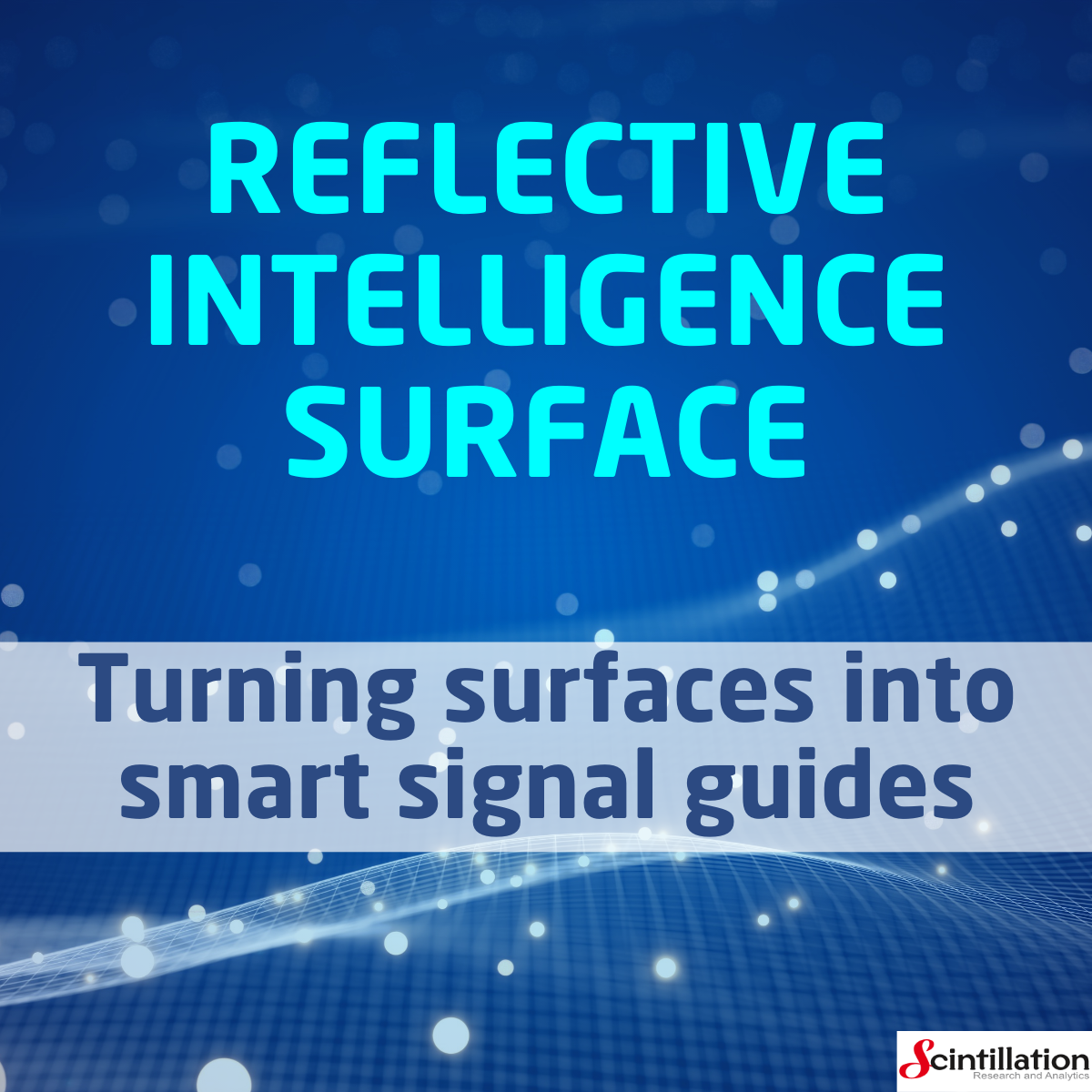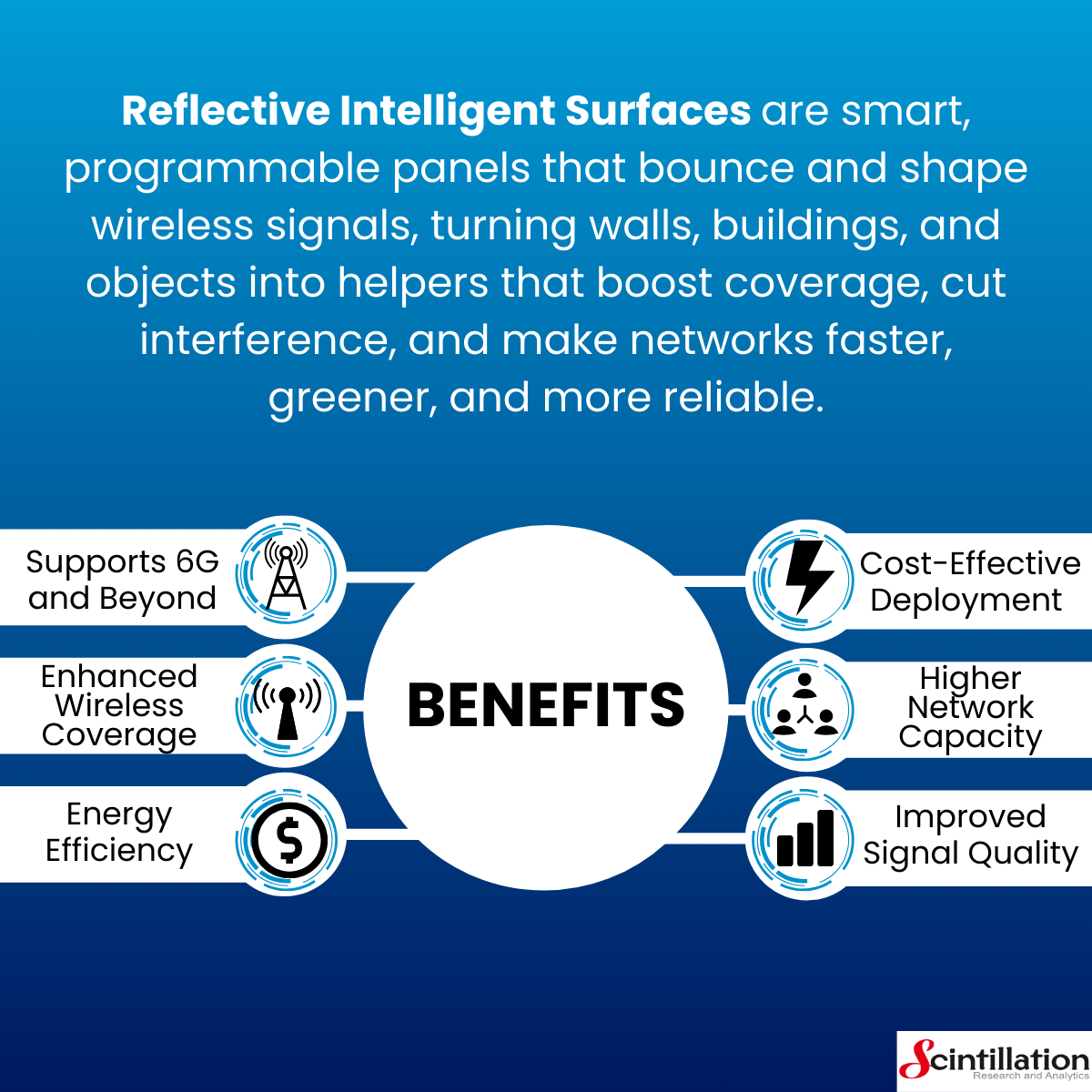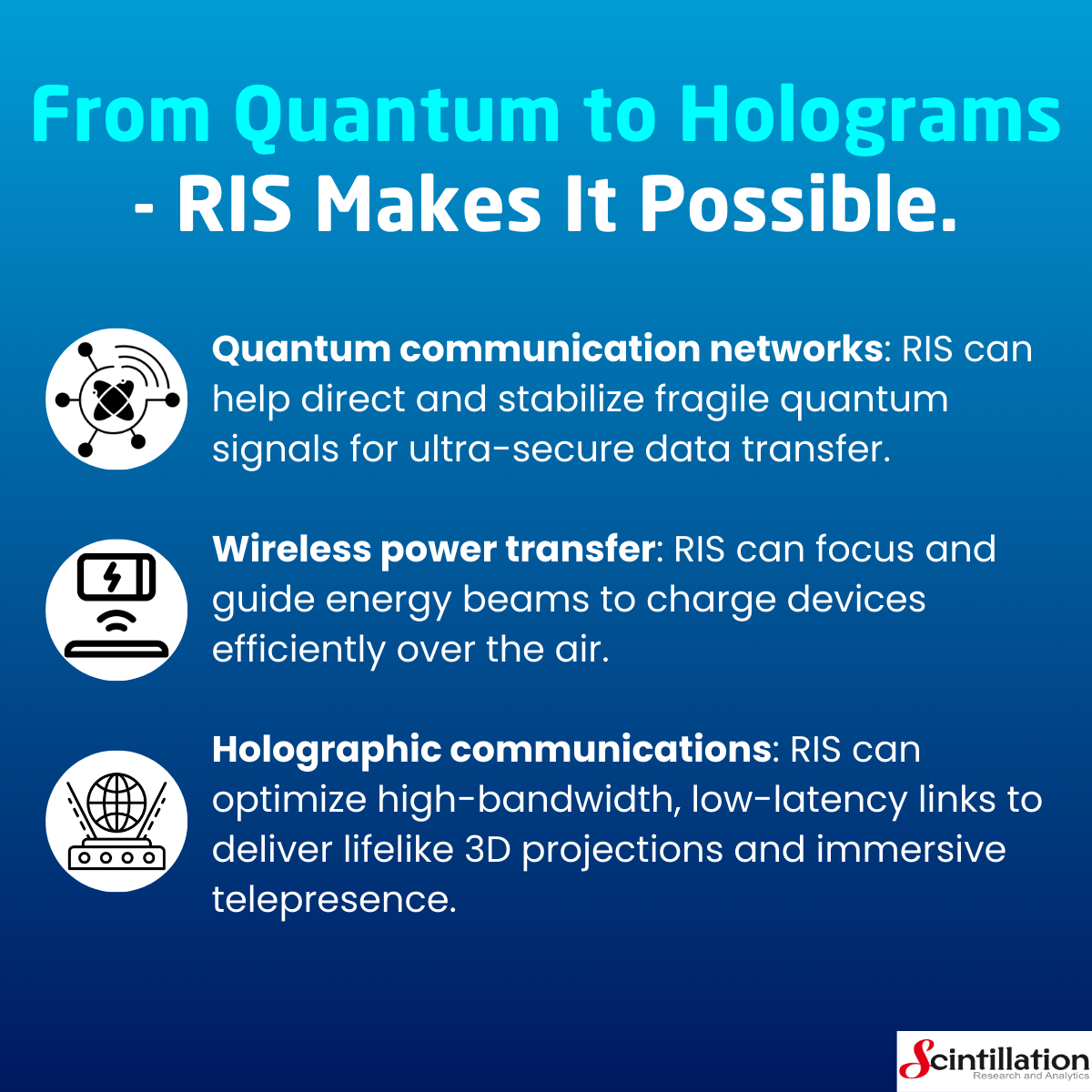
REFLECTIVE INTELLIGENT SURFACE
THE HIDDEN LAYER TRANSFORMING 6G AND BEYOND
As the world moves towards 6G and beyond, the demand for faster, more reliable, and energy-efficient wireless communication is reaching unprecedented levels. One emerging technology that promises to reshape the wireless landscape is Reflective Intelligent Surfaces (RIS). Often described as the “hidden layer” of future networks, RIS introduces a revolutionary way of controlling and enhancing radio signals, opening up new possibilities for connectivity.
What are Reflective Intelligent Surface?
Reflective Intelligent Surfaces are engineered structures composed of a large array of small, programmable elements. These elements can dynamically adjust how they reflect or refract electromagnetic waves, effectively shaping the wireless environment. Instead of relying solely on traditional antennas or base stations, RIS turns walls, buildings, or even objects into smart reflectors that improve signal quality and coverage.



Benefits of Reflective Intelligent Surface Technology:
- Energy Efficiency – By intelligently directing signals, RIS reduces energy consumption across the network.
- Cost-Effectiveness – Deploying RIS is often cheaper than building additional towers or antennas.
- Scalability and Flexibility – RIS can be integrated into various environments, from dense urban settings to rural areas.
- Enhanced Security and Reliability – Controlled signal reflection helps minimize eavesdropping and interference.
How RIS Works in 6G Networks:
In 6G, RIS will play a key role in overcoming challenges like signal loss, interference, and dead zones. Using advanced algorithms and AI, RIS can:
- Redirect signals around obstacles to maintain strong connectivity.
- Enhance coverage in areas with poor infrastructure.
- Optimize energy use by reducing the need for high-powered transmission.
- Support ultra-low latency applications like autonomous driving, AR/VR, and remote surgery.
The Road Ahead:
While still in development, RIS is attracting significant interest from academia, telecom companies, and startups worldwide. Research is ongoing to improve its hardware, software, and integration with AI. As standards evolve, RIS could become a fundamental building block of wireless networks, much like antennas are today.
